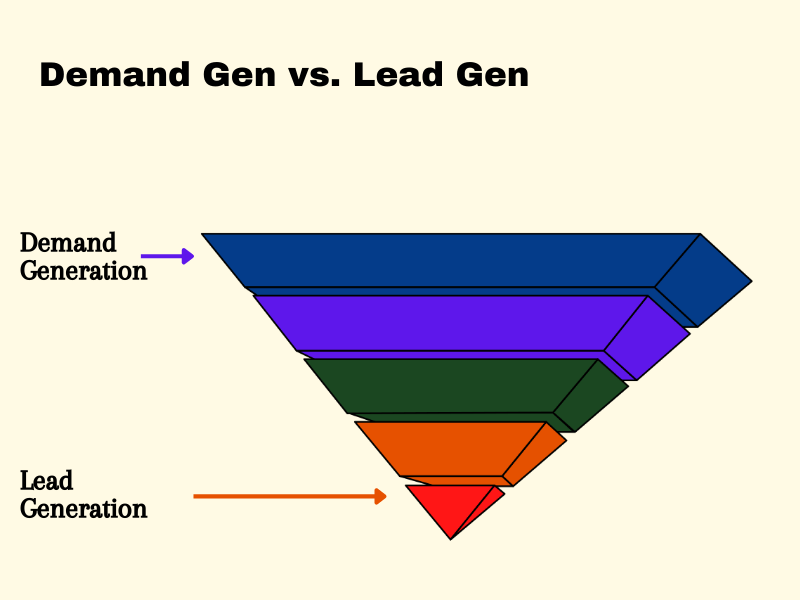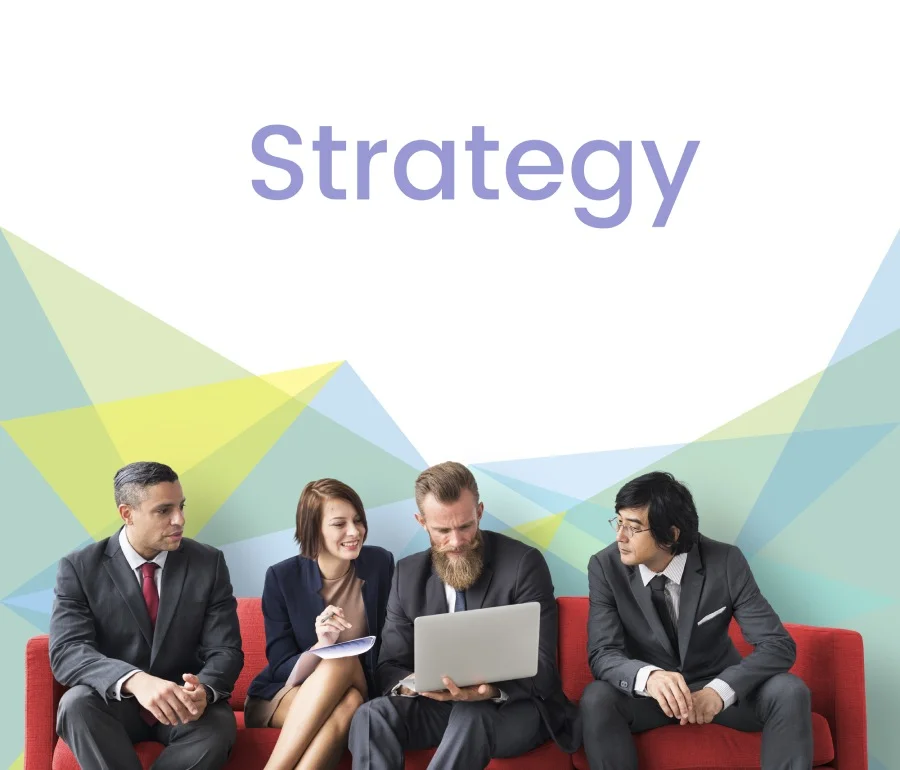10 Proven Demand Generation Methods to Enhance Business Growth

Demand Generation may appear easy, but it has various complexities. You must utilize appropriate methods to achieve desired outcomes.
Contrary to what people believe, the tactic doesn’t merely concentrate on the TOFU stage. Unlike other tactics, this concentrates on every stage of the funnel since you constantly raise awareness for your goods until your prospects buy from you.
If you require assistance, don’t worry! We’ll examine the meaning of this tactic and the difference between demand and lead generation and look at proven methods to ensure growth.
What is Demand Generation?
This tactic raises awareness for deals and offers. It utilizes inbound marketing techniques to meet the intended market, discover its pains and needs, and project its offers to solve problems.
This tactic avoids using coercion or shoving offers down people’s throats. It recognizes that people can only take in so much, and other enterprises compete for their intended market’s constrained capacity.
It starts by establishing trust via engagement and content so that when individuals want to buy, your brand will come to mind first.
Demand Generation vs Lead Generation
Both tactics are often interchanged for one another since they have numerous similarities, but they’re not the same. As mentioned, this technique pinpoints client issues and portrays the establishment as a solution provider. It’s a data-driven method with a revenue-growth objective.
This tactic engages clients at each journey stage, from prospect to devoted client and concentrates on every stage of the funnel. The top of the funnel is not where it starts and stops. It’s a never-ending process.

On the other hand, lead generation helps you move potential clients along the sales funnel by piquing their interest in your offers and deals. This means that it results in the conversion of prospects into leads.
This tactic concentrates on obtaining quality leads and transforming them into devoted clients, whereas demand generation concentrates on raising awareness. Without a doubt, both tactics feed into each other and vice versa. They collaborate to keep an active sales pipeline and boost income.
Establishments cannot create enough inbound leads to boost sales without rigid demand gen techniques. Also, it utilizes compelling offers and strong CTAs that are helpful in lead creation because clients can now entrust you with their personal info.
10 Tested Demand Generation Methods You Shouldn’t Miss
1. Account-Based Marketing (ABM)
Typical tactics concentrate on sending messages to the intended market via broach-reach media to reach more individuals and sell more items or services. But establishments that want to utilize this tactic fully should concentrate on ABM.
Why does that matter?
ABM campaigns concentrate on specific accounts within their industry or defined market and send customized messages to interact with them, depending on their preferences. Acc to a study – over 43% of B2B marketers utilize ABM to achieve their desired outcome.
This tactic enables enterprises to concentrate on specific accounts, making client retention and upselling easier. A typical campaign includes:
- Dispatching customized emails
- Setting up LinkedIn ads
- Directing prospective clients to landing pages with interactive and tailored content.
Speaking of content
2. Curate Pertinent Content
Because individuals have limited purchasing power, it is challenging to gain their trust if you don’t present yourself as an authority. Producing and disseminating educational content is a fantastic way to do this. Both B2B and B2C audiences can use this tactic, but highly beneficial for B2B.
Individuals in the B2B sector constantly seek methods to increase their expertise to develop new brand offers or advance their professional careers. This Contently study shows that 89% of marketers raise brand consciousness.
Creating instructive material assists clients in finding solutions and establishes your establishment as an authority. If you have the required skills, you can start by making and distributing educational content via pertinent channels.
3. Send Customized Emails
Which would you prefer—a generic gift box that they distributed to all the workers at your organization or a customized gift box with a customized greeting card?
Exactly.
No one doesn’t enjoy feeling special, so customized emails enable establishments and enterprises to do just that. A Statista report reveals that 78% of marketers send customized emails to prospective clients.
According to a different McKinsey and Company study, enterprises that employ this tactic generate 40% more income than their competitors. An efficacious plan must include sending personalized emails since it makes interacting with prospective clients and sending pertinent information easier.
To deliver excellent offers to those who need them the most, it is crucial to collaborate with a top-notch agency like FrescoData, which has an extensive database of prospect info.
4. Encourage User-Generated Content (UGC)
Contrary to what many people believe, you don’t necessarily have to do all the work if you utilize the tactic. How can one do this?
Encourage UGC on numerous platforms.
A 2020 Stackla Survey reveals that around 79% of customers’ purchasing decisions are influenced by user-generated content. Compared to traditional ads, it boosts trust in the brand’s proposition more quickly. Request photos of your products or items from your fans, then repost them on your page to start.
Provide incentives like discounts, vouchers, and tickets in exchange for their participation to boost engagement.
5. Host Virtual Events
Undoubtedly, virtual events such as webinars have become a fantastic resource for B2B enterprises. This study reveals that 85% of marketers utilize webinars to boost their ad capacity.
Who could blame us, though? Everything had to change since the pandemic encouraged people to choose the nomadic way of life. Webinars evolved as more workers chose a remote or hybrid lifestyle, making them more practical for knowledge dissemination.
Organizing a webinar is a fantastic approach to simultaneously enlighten a big audience, raise awareness, and produce quality leads. It is more affordable than holding physical events, especially for young enterprises, enabling them to advertise their packages and deals without spending a fortune.
6. Utilize LinkedIn
The finest medium for B2B enterprises to raise awareness for their deals and offers is, without a doubt, LinkedIn. 96% of B2B marketers utilize Linkedin to advertise their content, meet their intended market, and boost site traffic.
Building a community of individuals who need your offer is simple when you frequently publish on LinkedIn and engage with your audience. You could also run LinkedIn ads directly to gated content to obtain leads. What times are ideal for LinkedIn posting?
8 am to 2 pm on Wednesdays, Thursdays, and Fridays are the often ideal times to post on LinkedIn. Note: it’s not a strict regulation. It might be smart to experiment with various times to see which works best for your enterprise.
7. Offer Free Trials or Services
The word “free” has the most significant impact on consumers.
People adore freebies. They take up CTAs, participate in online contests, or do anything as long as it’s free. For that reason, one of the best methods is giving a free product for a 7 or 14-day trial period. When you do this, people will be more eager to test it.
They will stay with you if they enjoy your offer (and even recommend their friends). If they don’t, you might request feedback after they’ve used the product or after the trial period is up so you can figure out what went wrong and adjust your approach moving forward.
As nothing is free, most enterprises don’t believe in giveaways. Everything that you receive for free has been partially funded by someone else. You must devise a plan to make sure the expense of providing these freebies doesn’t harm operations.
8. B2B SEO
Curating content is a great step, but it’s not enough. This is where SEO comes in: your enterprise has to offer pertinent content that your intended market is looking for. A rigid plan must include SEO.
To maximize the number of site visitors, you must integrate B2B SEO into your digital resources. By employing appropriate keywords and collating information on buyer intent, you can produce content or distribute information your intended market seeks. You can increase brand recognition and reach more people by appropriately employing SEO.
9. Collaborate with Influencers
Establish strategic alliances with influencers to raise brand consciousness. This research shows that 93% of marketers reported success with their influencer marketing strategies.
Each influencer you choose should have a persona that fits your brand. For instance, if you run a health and fitness establishment, you should collaborate with an influencer who has built a following around that niche. You can work together to create movies, Instagram posts, or even ads with a link to gated material.
Also, sponsor their live events, podcasts, webinars, and other projects by offering exclusive discount coupons. The income from long-term partnerships will benefit both parties.
10. Open a Blog
Blogging is highly efficacious but heavily underrated.
Doubt this? Based on this research, brands with blogs have 97% more links than those without. It’s the most straightforward approach to providing value to your intended market and collecting leads.
Blogging makes enterprises more visible, boosts site traffic, and allows interaction with the intended market.
Let FrescoData Enable You to Achieve Your Desired Outcomes
We’ve discussed a lot of tactics in this article. Which will you choose?
Well, you don’t have to answer that question. At FrescoData, we utilize high-quality data to raise awareness for enterprises and establishments across all sectors.
We can help you determine the intended market and choose the best tactic to get their attention because we have a sizable database of prospective clients’ infor from numerous industries and an enormous B2B list.
Contact FrescoData for assistance right away.





